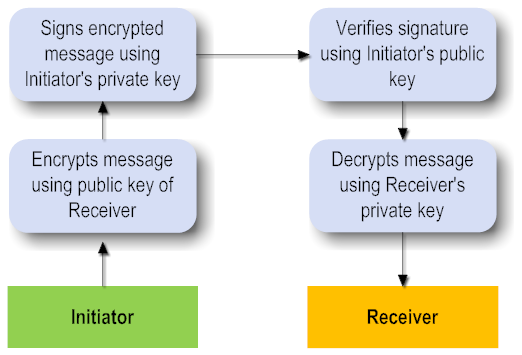Asymmetric Binding
Asymmetric Binding is used when both the Initiator and the Recipient possess public and private keys. The message transfer takes place using Public Key Infrastructure.

An Asymmetric Binding element in the WSDL looks like this:
<sp:AsymmetricBinding
xmlns:sp="http://schemas.xmlsoap.org/ws/2005/07/securitypolicy">
<wsp:Policy>
<sp:InitiatorToken>
</sp:InitiatorToken>
<sp:RecipientToken>
</sp:RecipientToken>
<sp:AlgorithmSuite>
<wsp:Policy>
<sp:TripleDesRsa15/>
</wsp:Policy>
</sp:AlgorithmSuite>
<sp:Layout>
<wsp:Policy>
<sp:Strict/>
</wsp:Policy>
</sp:Layout>
<sp:IncludeTimestamp/>
<sp:OnlySignEntireHeadersAndBody/>
</wsp:Policy>
</sp:AsymmetricBinding>
The following run-time actions that support WS-Security policies use a common Asymmetric Binding element:

The “Require Encryption” action.

The “Require Signing” action.

The “Require WSS SAML Token” action.

The “Require WSS X.509 Token” action.
